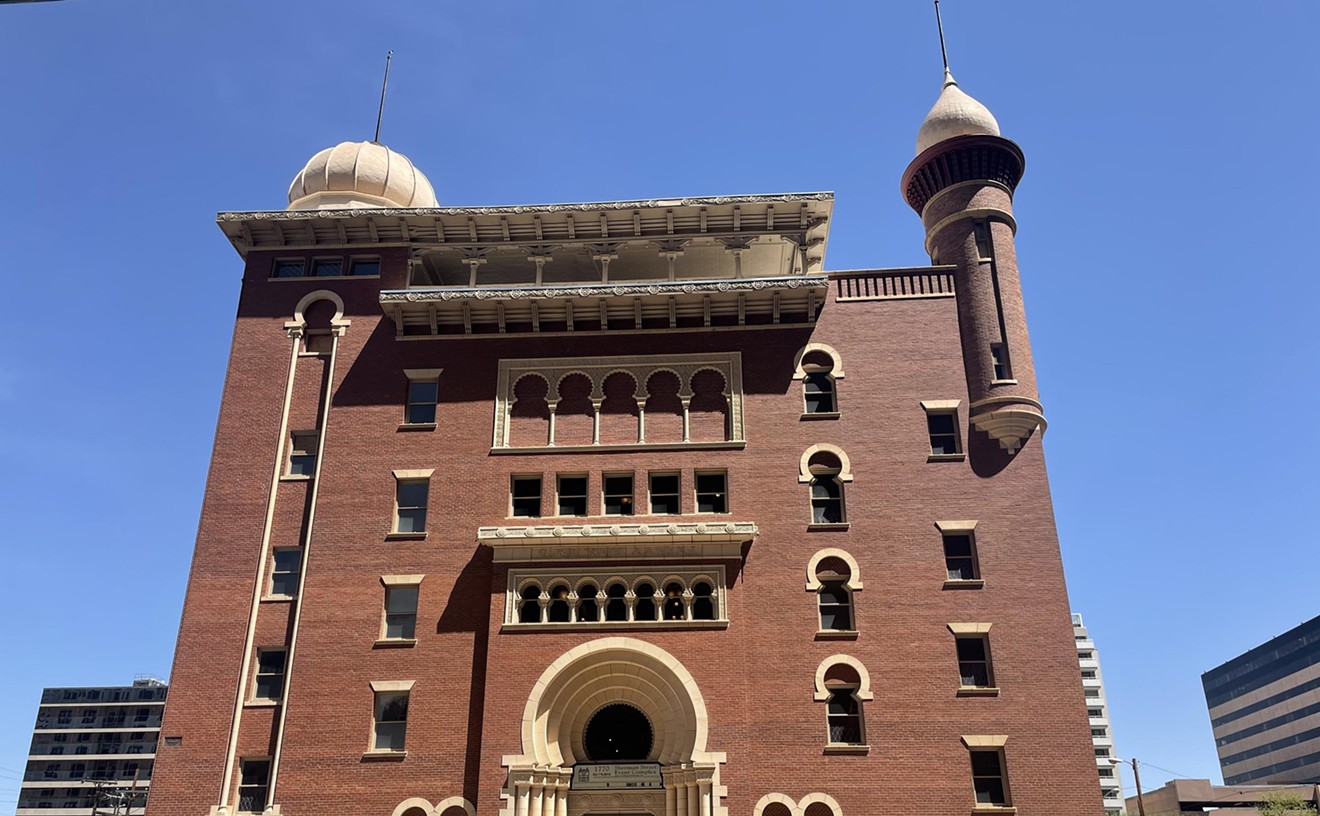Rich Grant had never seen anything like it. A forty-year resident of the Washington Park area and the retired director of communications for Visit Denver, Grant walks around the park every day. One exceptionally warm day in October, he headed out on his usual route, eager to take in the fall colors — and found Evergreen Hill closed off and under siege. The hill, a prized grove of conifers on the north side of the park, had been taken over by Denver Parks and Recreation crews equipped with cherry pickers and chainsaws.
Within a matter of hours, the crews had taken down and hauled off 21 mature trees. White firs, Douglas firs, Colorado blue spruce — some of them a hundred years old. Even more astonishing, Grant says, was the speed with which city workers hustled to dispose of the remains.
“The next day they came out with stump removers,” he marvels. “They’ve never moved that fast in that park before. It was like they were burying the bodies.”
Among park lovers, the event soon became known as the Evergreen Hill Massacre — a dubious achievement for a city that just a few years ago was trumpeting the many economic and environmental benefits of a thriving urban forest and pushing a campaign to plant a million trees. But even though it took October’s noisy operation to stir public outrage, it was hardly the first time the execution squad had paid a visit to Evergreen Hill. The area has been losing sickly and dying trees at a substantial clip for several years now.
“They started cutting down these mature conifers in a big way in about 2011,” says local activist Sonia John, who lives a few blocks from the park. “They would take out ten or twelve in a season, every spring and fall. They were so thick in here that at first it wasn’t noticeable.”
John has written a guide to the 76 species of trees in Washington Park, available at local coffee shops and other businesses. From researching park archives and studying tree rings on stumps, she has a pretty good idea of when many of the trees on Evergreen Hill were planted. Some date back to the dawn of World War I, when the sons of the legendary Frederick Olmsted were advising the city on its park landscaping; some arrived shortly after World War II. Based on her own painstaking inventory, Evergreen Hill has lost nearly two-thirds of its mature conifers over the past decade. Out of 136 trees that she mapped on the hill in 2004, only about fifty remain — a sparser, scrawnier canopy hovering over a midget battalion of freshly staked new plantings. Some of the replacements aren’t looking so hot themselves.“This is a historical area. I’m afraid it’s kind of destroyed.”
tweet this
“This was a historical area,” says John, walking through the thinned-out display. “Cheesman has more conifers than Washington Park, but this thing was dense, a much larger deal. I’m afraid it’s kind of destroyed. Some of these trees...this one doesn’t look healthy. That one is pretty good. But see, there are two Douglas firs over here that look pretty punk.”
Park officials say there are several factors behind the rash of tree removals. Some of the elderly conifers were simply at the end of their lives, they suggest; some had been stressed by drought or attacked by bugs; some apparently never recovered from a couple of vicious cold snaps in recent years, including a 77-degree temperature drop over three days last year. John says she doesn’t doubt that a few individual trees might have fallen victim to such predations, but that doesn’t begin to explain what happened on Evergreen Hill.
“The official line is that there are many things that cause trees to decline and die,” she notes. “Virus. Bacteria. Fungal diseases. Weather. Anthropogenic causes, like compacting the soil with construction equipment. But nobody has come up with a credible potential cause of this die-off that will explain why that cause isn’t operative on trees in neighbors’ yards across the street from the park.”
The primary reason for the die-off, John contends, is much simpler: The healthy trees on private property across the street from the park receive potable water — not the recycled water that’s been used in Washington Park since 2004.
Last June, Denver Water officials agreed to meet with members of Denver INC, short for Inter-Neighborhood Cooperation, a coalition of registered neighborhood associations and other groups. High on the agenda was a discussion of Denver Water’s recycled-water program, which provides wastewater that’s been sufficiently treated for irrigation purposes at a fraction of the cost of drinking water. The meeting was the first opportunity that John and others had to question the program’s boosters about several studies that had been done, mostly at the utility’s request, on the program’s impact on soils, vegetation — and especially trees. Collectively, the studies make a persuasive case that foliage and soils in city parks treated with Denver Water’s recycled product contain high amounts of sodium — which, over time, can be particularly lethal to conifers, since they draw water from their roots most of the year.
Washington Park was one of the first city parks to convert to recycled water; John says it’s no surprise that the ill effects should surface there more rapidly than at other parks. But 20 percent of the department’s irrigated properties are now using recycled water, which involves an entirely separate delivery system from that used for potable water. Park advocates say the high-sodium regimen is beginning to claim evergreens in other parks, too, and John fears it may be only a matter of time before deciduous trees get affected as well; she’s already seen “a lot more leaf scorch” on lindens in Wash Park, a possible indication that the trees are overdosing on salt. The City of Denver now saves a million dollars a year on park watering costs because of recycled water, but the park department’s critics claim that the city hasn’t embarked on any “meaningful remediation” to address a problem it’s known about for years.
Denver Parks deputy manager Scott Gilmore says the situation isn’t as black-and-white as the neighbors want it to be. “When people say it’s reused water, that’s trying to simplify a very complicated situation,” he sighs. “This isn’t Seattle. This isn’t California or back east, where you have lots of natural forest. This is an urban forest that humans created. We’re losing trees because of weather conditions and drought — and reused water. All those things coming together.”
Recycled water clearly has its place, particularly in the semi-arid West. But not every “green” solution is as environmentally friendly as it seems. If the water saves money but ends up costing Denver cherished areas of its urban forest, is it still a win-win? John doesn’t think so.
“I think we’ve got enough evidence to say that recycled water is a problem,” she says. “Up until now, it’s mainly been used on golf courses. Turf is quite resistant to sodium, and the vegetation in other states can be quite different from ours. In some ways, we’re kind of a guinea pig here.”
Russell Plakke shakes a canister of styrene pellets, not unlike the indestructible, non-biodegradable material used to stuff bean-bag chairs, so popular in the disco era. “I always say this is the best thing to come out of the ’70s,” he says.
Plakke is the supervisor for Denver Water’s recycled-water plant in Commerce City, a sprawling operation that stretches across several buildings. The treatment process begins with the styrene pellets and microorganisms, ends with crushed coal and chemicals, and can produce up to thirty million gallons of reused water a day. Open since 2004, the plant has grown its customer base gradually and hasn’t yet reached its design capacity, but Plakke says there have been days when production has hit the mid-twenties.
In the late 1980s, when Plakke was just out of the Navy, he toured a Denver Water demonstration facility on the same site as the current recycling plant. Back then, though, the project was focused on exploring the viability of “direct potable reuse” — the daunting task of taking storm runoff and sewer discharge and cleansing it sufficiently of contaminants to make it suitable for human consumption. Denver Water was a pioneer in such research, compelled by agreements that require it to explore various forms of water reuse for the supplies it diverts from the Western Slope.
Plakke was deeply impressed with what he saw on the tour. “It shaped what I wanted to do with my career,” he says.
After experimenting with numerous processes, Denver Water shuttered the demo plant in the early 1990s. It’s technologically feasible to turn sewer water into drinking water, but in most situations, the cost is prohibitive. There’s also the marketing challenge of convincing people to imbibe something that’s already traveled through toilets and drains, in intimate contact with every variety of human waste. (Although, as Plakke points out, communities that pull drinking water from the South Platte River downstream from Denver are already engaging in a form of indirect potable reuse, since the city’s treated wastewater is returned to the river.) Instead, the company decided to focus on a recycling plant for non-potable reuse. And Plakke is now a kind of brewmaster, overseeing the transformation of yesterday’s effluent into a resource suitable for today’s golf-course sprinklers.
Perversely, the process begins by introducing bacteria to water that’s already less than pure. The water comes from the Metro Wastewater Reclamation District, which has treated it to a point at which the water can be acceptably discharged into the river. The recycling plant has a biosystem at the front end, meaning that it adds ammonia-eating bacteria at the start of the filtering process; the styrene bean-bag beads dumped into the water supply give the little critters a perch on which to grow. Coagulants are then added to help draw together tiny particles of contaminant material, a clumping action that is further aided by a paddle-wheel device.
The water then flows through a series of basins, baffles and filter beds designed to separate and capture sediment, including a process that uses anthracite-coal particles as a kind of carbon filter. A final chlorine bath amps up the water quality, and the finished product is stored in a covered, eleven-million-gallon reservoir. It’s then pumped through a seventy-mile network of purple pipes to users across the metro area.“We’re losing trees because of weather conditions and drought — And reused water.”
tweet this
Denver Parks and Recreation was one of the plant’s first customers. Washington Park, City Park and several other parks began irrigating with recycled water in 2004; dozens more have switched over in the past decade, including Congress, Cheesman and many of the department’s newer facilities in Stapleton and the northeast corridor. The City Park and Park Hill golf courses also use recycled water, as do the Denver Country Club and the Denver Zoo. Recycled water keeps the grounds green at Denver’s East High, feeds the soccer field at Stanley British Primary School and helps generate electricity at Xcel Energy’s Cherokee power plant.
Plakke says that the current customer base represents about half the demand that the plant is designed to address; the goal is to supply 17,500 acre-feet of recycled water a year, freeing up enough potable water for more than 40,000 homes. But there was skepticism about the program even before the trees started dying in Washington Park. A few years ago, environmental activists questioned the wisdom of reusing wastewater that includes groundwater from the Lowry Landfill, which had been used for disposal of radioactive industrial, medical and household waste. The EPA’s own monitoring studies suggest that the minuscule amounts of Lowry groundwater in Metro’s treated product pose no identifiable risk. Still, the Rocky Mountain Arsenal, now a national wildlife refuge, had to undergo an extensive review by state and federal health officials before it could start using Denver’s recycled water (considered a “degraded” source of supply) to fill its lakes and irrigate bison and bird habitat.
The more immediate concern about recycled water is not about anything as exotic as plutonium. Wastewater is high in sodium, which comes from many sources — including many powdered laundry detergents. The recycling process can result in an even higher concentration, since chemicals such as sodium hydroxide (lye) and sodium bisulfite are used to adjust the alkaline levels and remove chlorine. Plakke says the plant’s initial output had a very high sodium content — as much as 190 parts per million — but has since dropped to half that level. He credits Metro Wastewater’s upgraded treatment plant for much of the drop, adding that the sodium used in his plant amounts to “5 percent or less” of the total sodium in the water that customers receive.
“It’s one of our success stories,” he says. “The quality of the water we’re getting now has improved dramatically, to the point where we no longer have to add a lot of product to the water to achieve our quality goals. Our treatment processes aren’t adding sodium.”
But the amount of sodium that remains is still high enough to pose a threat to vegetation. A 2010 Denver Water study of trees in several city parks and golf courses found the trees in Cheesman Park, which at that point wasn’t using recycled water, to be faring much better than those that were on the purple pipe. Trees in City Park and Swansea Park and on the Park Hill and City Park golf courses all showed “extremely high” or “excessively high” levels of sodium; and the symptoms of dieback, desiccation and foliar burn were found to be particularly “prevalent and obvious” among the white firs in Washington Park, which were described as “declining irreversibly.” A study conducted by Colorado State University, comparing soil samples collected from Denver parks and golf courses, showed that sodium levels at sites using recycled water approximately doubled between 2004 and 2009.
In a handout referring to the studies, Denver Water puts as positive a spin on the results as possible. “Recycled water sites had an average of 56 percent of trees classified as good,” the handout notes. “Tree tissues analysis indicated that sodium was the only constituent of concern.”
Yet subsequent studies have continued to show that concern is significant. One graduate student’s research on ponderosa pines in Denver parks found that prolonged exposure to recycled water had a marked effect on the pines’ ability to generate healthy needles; foliage samples from trees dependent on recycled water showed high concentrations of sodium and significantly higher needle necrosis.
Too much salt can block a tree’s ability to take in nutrients. Sonia John describes the effect of sodium on a conifer as similar to the dehydration that occurs when a man in a lifeboat tries to slake his thirst with seawater: The more he drinks, the worse off he is. Although Evergreen Hill has been hit the hardest, by John’s calculations all of Washington Park has lost more than a third of its mature conifers in the past decade, since the recycling program began. City Park has lost about a fifth of its conifers. Cheesman, which has only been on the purple pipe since 2013, has lost less than 10 percent of its conifers in the same time period.
Those losses have not gone unnoticed by other private and public agencies that have extensive landscaping to protect. True, the purple pipe represents substantial savings; Plakke says the program offers irrigation water at about 30 percent of the cost of potable water. According to Gilmore, Parks and Rec is saving even more: “A thousand gallons of potable water costs three dollars, and a thousand gallons of reused water is closer to thirty cents,” he says. But the hidden costs in those savings can be difficult to quantify.
One organization that has declined to sign up for the purple pipe is the Denver Botanic Gardens. “We are aware of and love the idea of the recycled-water program,” says DBG spokeswoman Erin Bird. “But since our plants are part of a living museum collection, we need to ensure that water and other nutrient sources are optimal. We do not want to take any chances with our collections, some of which are rare or fragile.”
In his 2006 State of the City address, then-Denver mayor John Hickenlooper announced a plan to plant a million trees in the metro area by 2025. Suncor Energy, the Canadian oil giant best known for the environmentally problematic extraction of synthetic crude from tar sands, pledged a million bucks in acorn money.
The Suncor grant ran out three years ago, and the Mile High Million campaign has stalled out after planting between 250,000 and 500,000 trees. The administration of Hickenlooper’s successor, Michael Hancock, has said that it’s focused on protecting the current urban canopy — not just the 79,000 trees in the city’s parks and parkways, but the estimated 2.2 million trees in the city as a whole — from threats such as drought and the emerald ash borer.
But Hancock’s team has had a rocky relationship with park advocates and neighborhood groups, who have questioned the city’s priorities and stewardship. The mayor’s push to turn over nine acres of a formerly designated natural area in southeast Denver to Denver Public Schools led to a long, ultimately unsuccessful legal challenge. An effort to install a “regional attraction” known as City Loop, a half-mile ring of plastic tubing, bike tracks and play areas that would have occupied several acres of City Park, collapsed under citizen protests (“Parks and Wreck,” December 19, 2013) — as did a plan by the Denver Zoo to install a gasification plant to convert animal waste into energy, an idea that had been endorsed by the parks department.
The use of recycled water in the parks threatens to be an even more divisive issue, with tree lovers lining up to bash a supposedly green initiative. Gilmore says his team was already exploring possible sodium-remediation measures before the uproar over the tree removal on Evergreen Hill and will be sitting down with Denver Water employees later this month to discuss their options. But neighborhood activists wonder why that discussion didn’t begin years ago, when the studies emerged showing the high sodium levels and recommending various steps to prevent further tree losses. One of those reports, prepared for Denver Water by two consulting firms in 2011, warns of the possibility that “delaying salt management programs could ultimately result in more expensive management or remediation programs.”
“For years, they did nothing,” John says. “Zip. And we’re at a point now where it’s going to be harder to correct.”
“To me, the elephant in the room is Denver Water,” adds Cynthia Johnstone, the board president of Friends and Neighbors of Washington Park. “They’re so big. They should be leading the discussion.”
Plant supervisor Plakke acknowledges that there are ways to lower the sodium content during the treatment process. But the methods — reverse osmosis, ion exchange, desalination and so on — are all considered far too expensive to be practical. They would use more energy, pose a new challenge of brine disposal, and significantly raise the price of recycled water.
A better solution, Plakke suggests, is to apply additional recycled water to the trees, in order to flush the sodium out of the root zone. The trees on the grounds of the treatment plant receive such attention, he points out, and aren’t doing badly at all — including the ponderosa pines.
“Each site is going to require different techniques or multiple techniques,” Plakke says. “I think [Parks and Recreation] is doing an exceptional job of learning this system.”
Supplemental watering is, in fact, one of the key recommendations made by all of the reports prepared by the utility’s consultants — though they don’t specify more recycled water as the best tool for flushing out the salts produced by recycled water. Using potable water would cost more, of course, and Gilmore is skeptical that the process would have the desired effect, even if the logistical challenges of irrigating with two different supply sources could be overcome.
“Flushing is pretty hard,” the parks deputy says. “To flush with potable, you’d have to switch the system from reuse, which would take quite a bit of time. Look at how many parks we have.”
John doesn’t think the delivery problem is quite so insurmountable; she envisions using fire hydrants or water trucks to flood the saltiest areas. Gilmore, though, stresses other possible measures, such as delivering additional nutrients or a sodium blocker through the current irrigation system and making sure that the sprinklers are properly adjusted so that they aim low and avoid spraying recycled water on the conifer needles.“The elephant in the room is Denver Water. They should be leading the discussion.”
tweet this
This fall, Denver INC passed a resolution urging Denver Parks and Recreation to immediately start flushing its evergreens with potable water once a month, with an increase to biweekly waterings during the summer. The subject will certainly come up again when a study committee, consisting of parks and Denver Water employees, citizen reps and other stakeholders, begins to meet early next year to develop a plan of action on the sodium question. The parks department is also studying various tree species that have a higher salt tolerance, such as evergreens accustomed to ocean-based storms in the Northwest, as possible replacement candidates. In the future, Gilmore suggests, the vegetation in Denver’s parks may look quite different from what it is now.
“We don’t have unlimited water supplies,” he says. “We have to be responsible and find sustainable practices for our park system.”
But sustainability and expediency aren’t always the same thing. Environmental writer David Owen makes that point resoundingly in his 2011 book The Conundrum: How Scientific Innovation, Increased Efficiency, and Good Intentions Can Make Our Energy and Climate Problems Worse. The presumed “savings” from more efficient lightbulbs or cheaper natural gas are largely illusory, Owen argues, since such innovations encourage people to consume more. One chapter is devoted to southern Nevada’s efforts to conserve water by irrigating with recycled water and pushing xeriscaping; the project has “saved” water, but also created a range of problems with sodium in the soil and, by keeping the state from reaching its limited allotment of Colorado River water, made possible further development in Las Vegas that will demand even more water.
Similarly, Denver Water’s stated goal of saving enough water through its recycling program for 40,000 households is of no tangible benefit to existing Denver residents — except, perhaps, for folks in construction and allied industries. It just enables the assembling of 40,000 additional homes on the semi-arid prairie.
“What appear at the time to be valuable environmental breakthroughs often turn out to be long-term disasters in the making,” Owen writes.
In Denver, the larger conversation about recycled water and its effects on the environment has yet to begin. For now, Gilmore is just grateful for all the wet weather last spring — all that non-acidic, low-salt rain from the heavens, naturally flushing the roots of the trees on Evergreen Hill and all across the parks system.
“This year is one of the best things that could happen,” he says, “when you’re dealing with reused water.”











